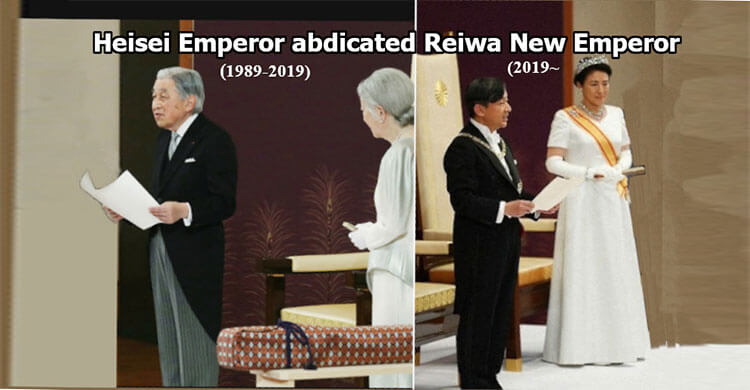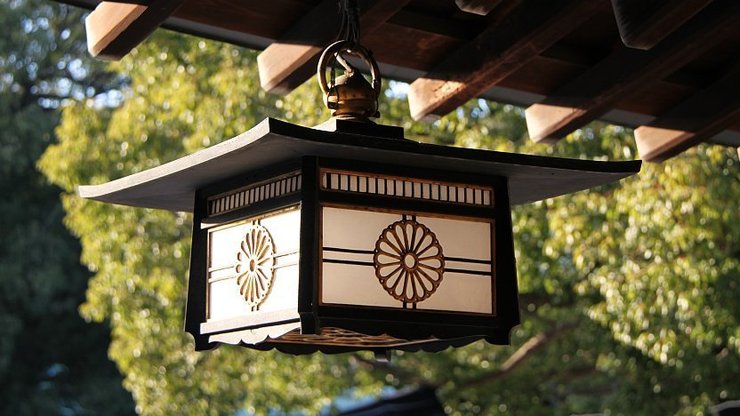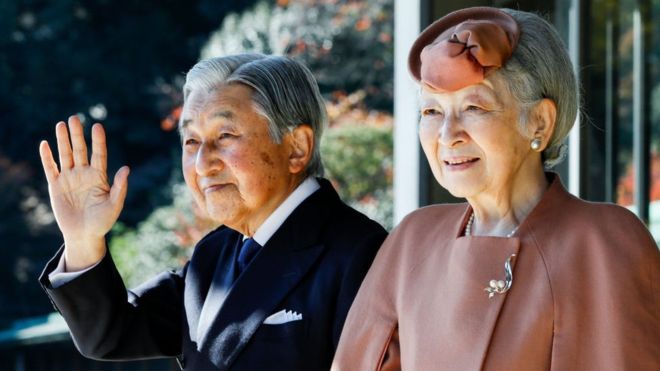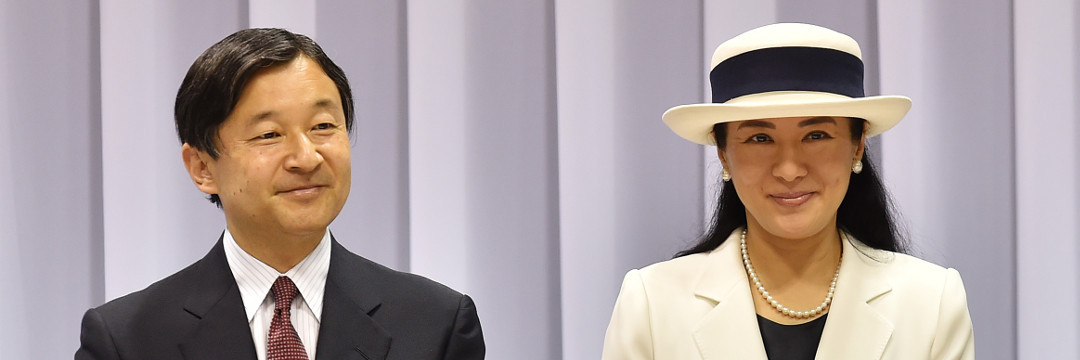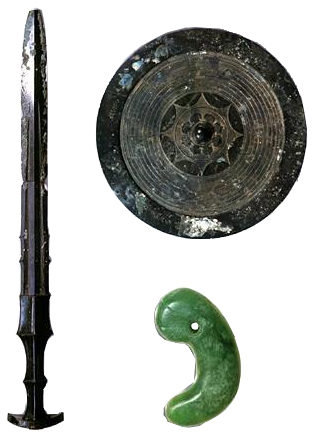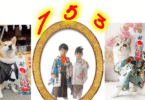Hello Ladies & Gentlemen how are you doing? I’d like to announce you that inaugural ceremony of New Emperor or historical enthronment was held today on May 1st, 2019.
At the same time, I ‘d like to appreciate abdicated Emperor ” It was a hard work for 30 years as the emperor”, since we have experienced a great number of natural disasters like earthquakes, torrential rains and explosion of nuclear power plant caused by Tsunami and so on during his tenure of Heisei Era.

The Imperial couple bow toward the devastated town of Minamisanriku, Miyagi Prefecture, on April 27, after the earthquake and tsunami that struck northern Japan the previous month

Make comforting words to the victims
Contents
What’s ” Emperor of Japan”?
Mythology says, Japan’s first emperor, Emperor Jimmu, was a descendant of the Sun Goddess Amaterasu and enthroned in the year 660 BC.
While the myths are not considered historically accurate, it is commonly accepted that emperors have reigned over Japan for more than 1500 years, and that they have all descended from the same family.
The imperial crest is a 16-petaled chrysanthemum flower.
Despite the fact that the effective power of the emperors was limited or purely symbolic throughout most of Japan’s history.
All actual rulers, from the Fujiwara and Hojo regents to the Minamoto and Tokugawa shoguns respected the emperor and were keen in having the imperial legitimization for their position as rulers.
With the Meiji Restoration of 1868, the Tokugawa shogunate was overthrown, and Emperor Meiji became the head of state.
Under the new Meiji constitution, the Emperor held sovereign power, and his political and military power was theoretically close to absolute.
In practice, however, the real power first laid with the oligarchic genro and later with the prime ministers, generals and admirals.
The postwar constitution of 1946 states that the emperor has only a symbolic function.
He now mainly participates at ceremonies and diplomatic meetings but has no effective political power.
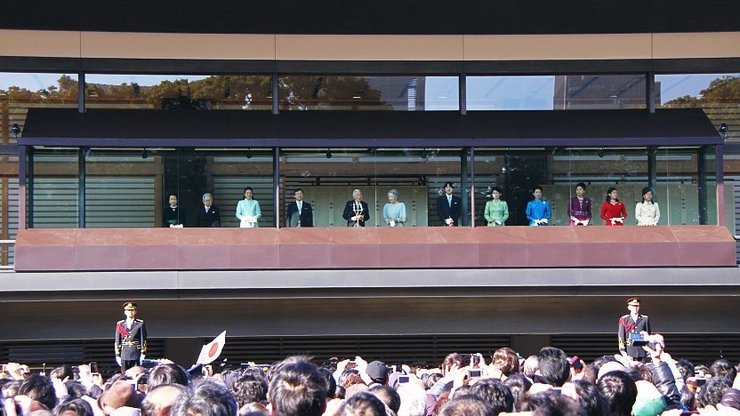
The Imperial Family during the New Year Greeting at the Tokyo Imperial Palace
In 2019, Emperor Naruhito became Japan’s 126th emperor. He is married to Empress Masako.
Heisei Emperor Akihito abdicates with prayer for peace
On the last day of his 30-year reign, Emperor Akihito on April 30th, 2019 said he “sincerely thanks” the Japanese people for their support of him as the symbol of the state, paving the way for the nation’s first abdication in around 200 years and Crown Prince Naruhito’s accession to the Chrysanthemum Throne at midnight.
“Today, I am concluding my duties as the emperor,” he told a nationally televised ceremony marking his abdication.
“Since ascending the throne 30 years ago, I have performed my duties as the emperor with a deep sense of trust in and respect for the people, and I consider myself most fortunate to have been able to do so.
“I sincerely thank the people who accepted and supported me in my role as the symbol of the state,” he said, before closing his final remark as the emperor with a prayer for peace in times ahead.
“I pray, with all my heart, for peace and happiness for all the people in Japan and around the world.”
The outgoing emperor’s remark followed Prime Minister Shinzo Abe’s statement announcing his abdication. Abe lauded the emperor for how he always “shared the joys and sorrows” of the people and gave them “courage and hope” by staying close to them in difficult times of natural disasters.
“Keeping in mind steps made by His Majesty, we will further strive to do our best to carve out Japan’s bright future full of peace and hope that we can be proud of,” Abe said.
The abdication by a living Japanese monarch was the first since 1817. Following Tuesday’s exit, Emperor Akihito and Empress Michiko will now be officially referred to as the “emperor emeritus” and “empress emerita,” respectively.
The abdication in turn put an end to the 30-year run of the Heisei (Achieving Peace) imperial era, which began on Jan. 8, 1989, and ended as the clock hit midnight and entered the Reiwa (Beautiful Harmony) Era, opening a new chapter in its history under the reign of the new emperor.

The emperor took part in private Shinto ceremonies to start the day
Emperor Naruhito Takes the Throne, and a New Era “Reiwa” Arrives
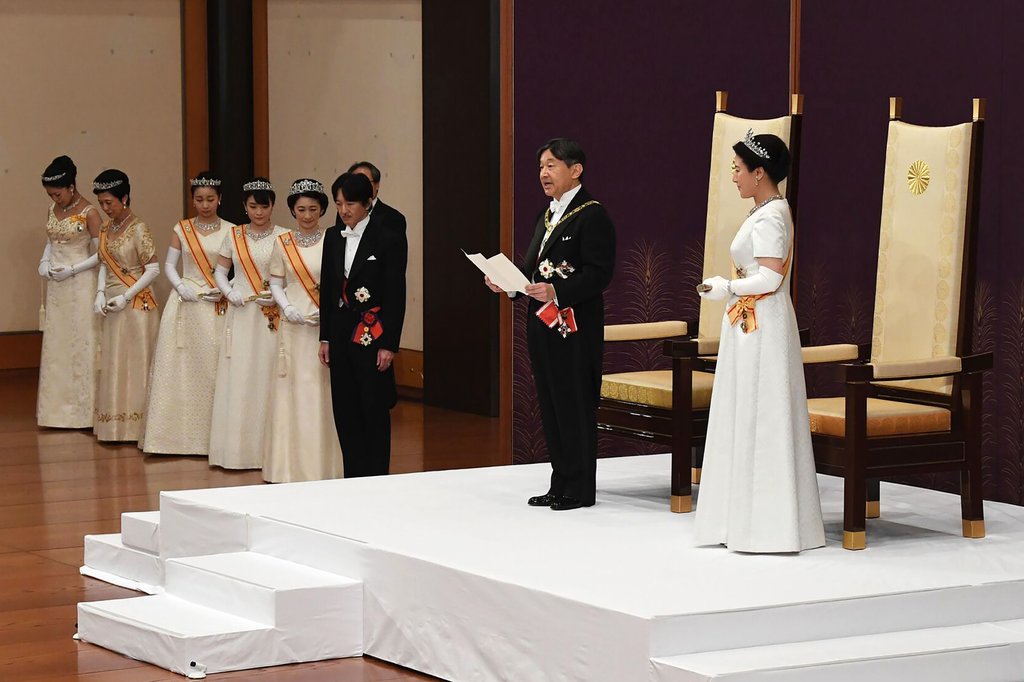
The new emperor, Naruhito, delivered an address after his accession to the throne at the Imperial Palace in Tokyo on May 1st, 2019
A day after his father became the first monarch to abdicate the imperial throne of Japan in more than two centuries, the new emperor, Naruhito, on May 1st received the sacred imperial regalia that represents his rightful succession to the world’s oldest monarchy.
In an eye-blinkingly brief ceremony at the Imperial Palace, Naruhito, 59, officially succeeded Akihito, 85, an enormously popular monarch who brought the royal family much closer to the people as he emphasized a message of peace in a country haunted by the legacy of war.
Emperor Akihito abdicated the Chrysanthemum Throne on Tuesday, three decades after he succeeded his father, the wartime emperor Hirohito.
While the role of emperor has been chiefly ceremonial since the end of World War II, the departing monarch acted as the nation’s chief consoler during times of disaster, such as the 2011 earthquake and tsunami, and sought to make amends throughout Asia for Japan’s wartime atrocities.
Conservatives balked at Akihito’s embrace of atonement, but his son is likely to continue to stress pacifism and war remembrance, as well as his father’s efforts to humanize the monarchy.
“In acceding to the throne, I swear that I will reflect deeply on the course followed by His Majesty the emperor emeritus and bear in mind the path trodden by past emperors, and will devote myself to self-improvement,” Naruhito said in his first remarks as emperor after the enthronement ceremony on Wednesday.
He added that he would work in service “of the unity of the people of Japan, while always turning my thoughts to the people and standing with them.”
Naruhito is taking the throne at a time when Japan faces numerous challenges, including a low birthrate and a declining, aging population. The country is making efforts to open itself to foreign workers, change the country’s brutal, entrenched work culture and reduce gender inequality.
Under the country’s postwar Constitution, the emperor — once regarded as a demigod — has no political power to address any of these issues directly, but he can set a tone. Analysts have been scrutinizing Naruhito’s previous public statements for hints of what his reign might look like.
Educated at Oxford University, Naruhito, along with his wife, Masako, a former diplomat with a degree from Harvard, represents a cosmopolitan outlook in an often insular Japan.
In his limited public statements, Naruhito has indicated he believes the monarchy should adjust to modernity.
What’s “The Imperial Regalia of Japan”?
The Imperial Regalia of Japan, also known as the Three Sacred Treasures of Japan, consist of the sword Kusanagi, the mirror Yata no Kagami, and the jewel Yasakani no Magatama. The regalia represent the three primary virtues: valor (the sword), wisdom (the mirror), and benevolence (the jewel).
Due to the legendary status of these items, their locations are not confirmed, but it is commonly thought that the sword is located at the Atsuta Shrine in Nagoya, the jewel is located at the Three Palace Sanctuaries in Kōkyo (the Imperial Palace in Tokyo), and the mirror is located at the Ise Grand Shrine in Mie Prefecture

